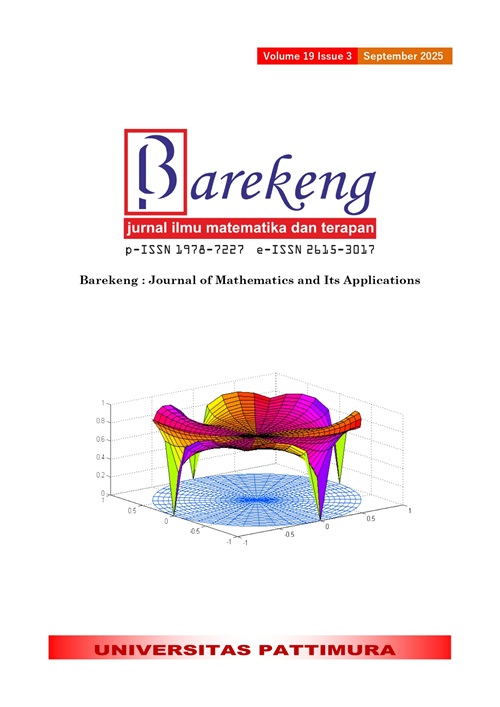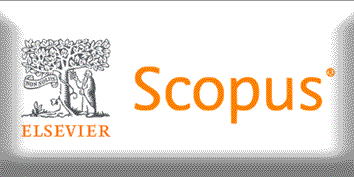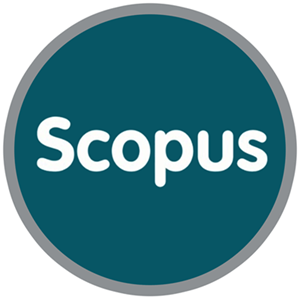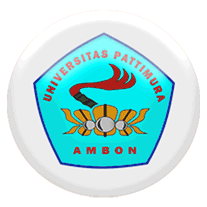ANALYSIS OF FOOD SECURITY FACTORS WITH PATH MODELING SEGMENTATION TREE (PATHMOX) METHOD IN PARTIAL LEAST SQUARES IN WEST KALIMANTAN
Abstract
Food security is essential for ensuring community well-being by guaranteeing sufficient, safe, and nutritious food, particularly in regions with complex socio-economic conditions. This study analyzes food security in West Kalimantan Province by identifying key influencing factors, constructing a structural equation model, and segmenting regions based on their food security characteristics. Utilizing secondary data from the 2023 Food Security and Vulnerability Atlas (FSVA), the research employs the Partial Least Squares Structural Equation Modeling (PLS-SEM) method with the Path Modeling Segmentation Tree (PATHMOX) approach. The study incorporates ten indicators across four latent variables: food availability, food access, food absorption, and overall food security. The results reveal that regional segmentation using the PATHMOX approach effectively identifies data heterogeneity, categorizing West Kalimantan’s 14 districts/cities into two distinct groups based on the Human Development Index (HDI). The first group (10 regions) exhibits higher food consumption despite socio-economic challenges, whereas the second group (4 areas) demonstrates better food security yet lower intake levels. These findings highlight that food security is influenced by access, distribution, and policy implementation rather than solely by the Normative Consumption Production Ratio (NCPR). The insights from this study provide a foundation for developing targeted policies to enhance food security strategies in West Kalimantan Province, ensuring a more sustainable and equitable food system. By applying PATHMOX segmentation, policymakers can address regional disparities more effectively, fostering strategic interventions that improve food availability, accessibility, and utilization across different population groups.
Downloads
References
M. Diarty and A. W. Wijayanto, “ANALISIS ASPEK KETAHANAN PANGAN INDONESIA DENGAN HARD DAN SOFT CLUSTERING, 2022,” Rekayasa, vol. 17, no. 1, pp. 108–123, 2024, doi: https://doi.org/10.21107/rekayasa.v17i1.21774.
A. Nugroho, “ANNUAL COUNTRY REPORT 2023 INDONESIA,” World Food Programme, 2024.
Antara News Kalbar, “PERUBAHAN IKLIM JADI TANTANGAN PENGEMBANGAN SEKTOR PERTANIAN DI KALBAR,” 2022.
Nasional Disaster Management Agency, “BENCANA BESAR TAHUN 2023,” Badan Nasional Penanggulangan Bencana, 2024.
Pemerintah Provinsi Kalimantan Barat, “GAMBARAN UMUM ASPEK GEOGRAFIS KALIMANTAN BARAT,” 2024.
Pemerintah Provinsi Kalimantan Barat, “20 KECAMATAN DI KALBAR RENTAN PANGAN,” Pemerintah Provinsi Kalimantan Barat.
Badan Pusat Statistik Provinsi Kalimantan Barat, POTENSI PERTANIAN PROVINSI KALIMANTAN BARAT ANALISIS SEKTOR PERKEBUNAN, TANAMAN PANGAN DAN HORTIKULTURA. Kalimantan Barat: Badan Pusat Statistik Provinsi Kalimantan Barat, 2024.
Badan Pangan Nasional, INDEKS KETAHANAN PANGAN 2023. Jakarta Selatan, 12550, 2023.
M. Sarstedt, C. M. Ringle, D. Smith, R. Reams, and J. F. Hair, “PARTIAL LEAST SQUARES STRUCTURAL EQUATION MODELING (PLS-SEM): A USEFUL TOOL FOR FAMILY BUSINESS RESEARCHERS,” J. Fam. Bus. Strateg., vol. 5, no. 1, pp. 105–115, 2014.doi: https://doi.org/10.1016/j.jfbs.2014.01.002
S. S. Ebrahimi, F. Lashgharara, S. M. Mirdamadi, and M. O. Najafabadi, “FACTORS INFLUENCING CLIMATE CHANGE ADAPTATION PRACTICES AND THEIR IMPACTS ON FOOD SECURITY DIMENSIONS IN HORTICULTURAL CROPS EVALUATED USING PLS-SEM ANALYSIS,” Bulg. J. Agric. Sci., vol. 29, no. 5, pp. 978–993, 2023.
E. Nur Cholidah, Y. Farida Baliwati, and A. Khomsan, “PEMODELAN OBESITAS DAN KETAHANAN PANGAN DI PROVINSI JAWA BARAT: PENDEKATAN PARTIAL LEAST SQUARE STRUCTURAL EQUATION MODELING [PLS-SEM],” vol. 3, no. 2, pp. 91–102, 2018.doi: https://doi.org/10.22435/pgm.v41i2.1890
W. U. Dewi, K. Nisa, and M. Usman, “ANALYSIS OF FOOD SECURITY FACTORS IN INDONESIA USING SEM-GSCA WITH THE ALTERNATING LEAST SQUARES METHOD,” JTAM (Jurnal Teor. dan Apl. Mat., vol. 8, no. 2, p. 479, 2024, doi: https://doi.org/10.31764/jtam.v8i2.20378.
G. Lamberti, T. A. Banet, and G. Sánchez, “THE PATHMOX APPROACH FOR PLS PATH MODELING: DISCOVERING WHICH CONSTRUCTS DIFFERENTIATE SEGMENTS: PATHMOX APPROACH: DISCOVERING WHICH CONSTRUCTS DIFFERENTIATE SEGMENTS,” Appl. Stoch. Model. Bus. Ind., pp. 1–16, 2017.doi: https://doi.org/10.1002/asmb.2270
G. Lamberti, “MODELLING WITH HETEROGENEITY,” Universitat Politècnica de Catalunya, 2015. doi: 10.5821/dissertation-2117-95733.
Badan Pangan Nasional, PETA KETAHANAN DAN KERENTANAN PANGAN (FOOD SECURITY AND VULNERABILITY ATLAS - FSVA) PROVINSI KALIMANTAN BARAT 2023. Kalimantan Barat: Badan Pangan Nasional, 2023.
I. Ghozali and H. Latan, PARTIAL LEAST SQUARE: KONSEP, TEKNIK, DAN APLIKASI MENGGUNAKAN SMARTPLS 3.0 EDISi 2. Semarang : Badan Penerbit UNDIP, 2015.
S. Santoso, KONSEP DASAR DAN APLIKASI SEM DENGAN AMOS 24. Elex Media Komputindo, 2018.
M. Ulum, I. M. Tirta, and D. Anggraen, “ANALISIS STRUCTURAL EQUATIONMODELING(SEM) UNTUK SAMPEL KECIL DENGAN PENDEKATAN PARTIAL LEAST SQUARE (Pls),” in Seminar Nasional Matematika, 2014, no. November, p. 6.
P. Wuri Handayani et al., KONSEP CB-SEM DAN SEM-PLS DISERTAI DENGAN CONTOH KASUS. Raja Grafindo Persada, 2019.
I. Ghozali and H. Latan, “PARTIAL LEAST SQUARES KONSEP, TEKNIK DAN APLIKASI MENGGUNAKAN PROGRAM SMARTPLS 3.0 UNTUK PENELITIAN EMPIRIS,” Univ. Diponegoro Semarang, vol. 4, no. 1, 2014.
A. M. Musyaffi, H. Khairunnisa, and D. K. Respati, KONSEP DASAR STRUCTURAL EQUATION MODEL-PARTIAL LEAST SQUARE (SEM-PLS) MENGGUNAKAN SMARTPLS. Pascal Books, 2022.
G. Lamberti, T. B. Aluja, and G. Sanchez, “THE PATHMOX APPROACH FOR PLS PATH MODELING SEGMENTATION,” Appl. Stoch. Model. Bus. Ind., vol. 32, pp. 453–468, 2016.doi: https://doi.org/10.1002/asmb.2168
Y. Hernández Potiomkin Advisor and T. Aluja Banet, “DETECTING HETEROGENEITY IN GENERALIZED LINEAR MODELING,” Universitat Politècnica de Catalunya, 2017.
A. H. Hiariey, “ANALISIS PATH MODELING SEGMENTATION PARTIAL LEAST SQUARE ( PATHMOX-PLS ) PADA GAMBARAN KLINIS PASIEN HIV / AIDS,” Institut Teknologi Sepuluh November, 2018.
M. Sholihin and D. Ratmono, ANALISIS SEM-PLS DENGAN WARPPLS 7.0 UNTUK HUBUNGAN NONLINIER DALAM PENELITIAN SOSIAL DAN BISNIS. Penerbit Andi, 2021.
M. R. Ab Hamid, W. Sami, and M. H. Mohmad Sidek, “DISCRIMINANT VALIDITY ASSESSMENT: USE OF FORNELL & LARCKER CRITERION VERSUS HTMT CRITERION,” J. Phys. Conf. Ser., vol. 890, no. 1, 2017, doi: https://doi.org/10.1088/1742-6596/890/1/012163.
R. A. Z. Tama, M. M. Hoque, Y. Liu, M. J. Alam, and M. Yu, “AN APPLICATION OF PARTIAL LEAST SQUARES STRUCTURAL EQUATION MODELING (PLS-SEM) TO EXAMINING FARMERS’ BEHAVIORAL ATTITUDE AND INTENTION TOWARDS CONSERVATION AGRICULTURE IN BANGLADESH,” Agric., vol. 13, no. 2, 2023, doi: https://doi.org/10.3390/agriculture13020503.
A. Sarkar, W. Hongyu, A. A. Jony, J. C. Das, W. H. Memon, and L. Qian, “EVALUATION OF THE DETERMINANTS OF FOOD SECURITY WITHIN THE COVID-19 PANDEMIC CIRCUMSTANCES- A PARTICULAR CASE OF SHAANXI, CHINA,” Glob. Heal. Res. Policy, vol. 6, no. 1, 2021, doi: https://doi.org/10.1186/s41256-021-00230-2.
J. F. Hair, G. T. M. Hult, C. M. Ringle, M. Sarstedt, N. P. Danks, and S. Ray, PARTIAL LEAST SQUARES STRUCTURAL EQUATION MODELING (PLS-SEM) USING R: A WORKBOOk. Springer International Publishing, 2021. doi: https://doi.org/10.1007/978-3-030-80519-7.
M. Sarstedt, C. M. Ringle, and H. Joseph F., PARTIAL LEAST SQUARES STRUCTURAL EQUATION MODELING. 2022.
G. Lamberti and T. A. Banet, “INVARIANCE TEST: DETECTING DIFFERENCE BETWEEN LATENT VARIABLES STRUCTURE IN PARTIAL LEAST SQUARES PATH MODELING,” Int. J. Stat. Probab., vol. 6, no. 2, p. 54, 2017, doi: https://doi.org/10.5539/ijsp.v6n2p54.
M. Ur Rehman, A. Ahmed, A. Khan, and A. Khan, “The Role of Poverty, Food Security, and Rapid Population Growth on Human Development in Pakistan,” NUST J. Soc. Sci. Humanit., vol. 8, no. 3, pp. 89–105, 2023, doi: https://doi.org/10.51732/njssh.v8i3.155.
G. Lamberti, “genpathmox: AN R PACKAGE TO TACKLE NUMEROUS CATEGORICAL VARIABLES AND HETEROGENEITY IN PARTIAL LEAST SQUARES STRUCTURAL EQUATION MODELING,” R J., vol. 15, no. 2, pp. 294–306, 2023, doi: https://doi.org/10.32614/RJ-2023-051.
Copyright (c) 2025 Nabila Izza Harnanta, Hendra Perdana, Neva Satyahadewi

This work is licensed under a Creative Commons Attribution-ShareAlike 4.0 International License.
Authors who publish with this Journal agree to the following terms:
- Author retain copyright and grant the journal right of first publication with the work simultaneously licensed under a creative commons attribution license that allow others to share the work within an acknowledgement of the work’s authorship and initial publication of this journal.
- Authors are able to enter into separate, additional contractual arrangement for the non-exclusive distribution of the journal’s published version of the work (e.g. acknowledgement of its initial publication in this journal).
- Authors are permitted and encouraged to post their work online (e.g. in institutional repositories or on their websites) prior to and during the submission process, as it can lead to productive exchanges, as well as earlier and greater citation of published works.






1.gif)



